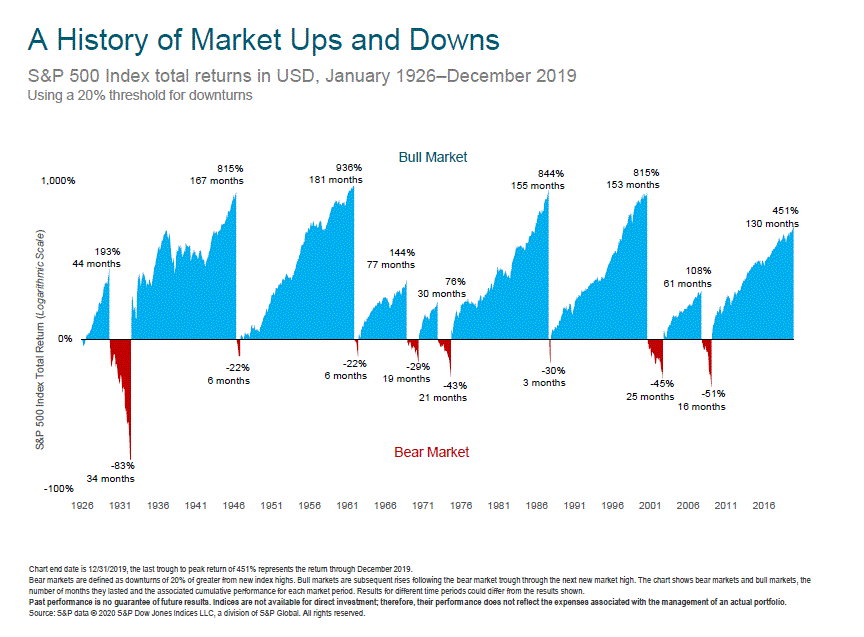How Is A Horror Movie Like The Economy And The Markets?
I am not a big fan of scary movies. You know, the ones with the guy in the hockey mask or the girl with the head-spinning thing; that’s just not for me. If I’m honest even just typing those words made me cringe at the memories of seeing those scenes. But there’s an analogy going on between those films and the economy and the stock market. Bear with me, and I’ll explain (hint: it’s not scary).

In those movies, there is a point in which you realize something really, really bad is about to happen. It’s that “oh boy, this is going to be very terrifying” type of moment. Physiologically, some people might experience an increase in heart rate, dryness of mouth, eyes watering or goosebumps. The emotion known as fear is palpable, and we’re anticipating something but we have no idea what to expect.
Some would say (I can’t) that the best horror film keeps this feeling “alive” in you for as long as possible–drawing you in, and keeping you engaged and fearing the absolute worst. Then there is that point that we’re let in. We see the monster, or the face, or the ‘thing’ coming out of the TV and it’s in front of us. It’s at this point that something begins to change. It might be scary, but we know what we’re facing now–it’s in front of us, and there’s almost a sigh of relief as we begin to adapt to a new phase of the film. Some might say “this isn’t really that bad” and the heart rate returns to a more normal pace and the goosebumps subside. Things still need to be dealt with in the movie, but we at least know what we’re dealing with.
How are the economy and the stock market similar to this? > SEE MORE

Posted by:
Pete Dixon, CFP®
Partner and Advisor
A Calm Reflection On The Markets
Many of you may prefer to tune out the financial news, and you may not need much reassurance when we experience bear markets. But the biggest worry that we have is that a client is worried; if that is the case with you please don’t hesitate to call to go over your investment plan.
The most common question we get during times like these is: “your phone must be ringing off the hook.” The truth is, that it is not. That doesn’t mean that we’re less busy in times like these. But we do think the quiet is a testament to not only the planning we’ve done and (hopefully) the perspective we’ve provided you, but also that you’ve placed your trust in us. So thank you for that trust—we don’t take it lightly—and we really mean that we are here for you if you want to call or set up an appointment.
So, another long bull market has come to an end (for now). This happens when a market declines by 20% from its recent high watermark. And, while we tend to focus on the negative aspect (the -20% or more), which we completely understand, we recently came upon the following picture that shows in detail the length and scale of ALL the previous bull markets (and bear markets). What is very evident, is that over time the blue/positive/upturn/bull markets dominate the red/negative/downturn/bear markets.
You can click on the following link to see a larger version of this image: Market Declines and Volatility

This, of course, doesn’t mean that downturns are any less difficult when we’re experiencing them. But sometimes visual evidence can help a long-term investor (like you) remember why we invest in the first place. The positive growth outlasts the negative (every time so far) and the net outcome is expected growth. We don’t know when the next upturn will begin. But staying invested means that we’ll be there when it does.
Past performance is no guarantee of future results. Indices are not available for direct investment; therefore, their performance does not reflect the expenses associated with the management of an actual portfolio.

Posted by:
Waypoint Wealth Management
A Closer Look At Dividends
When generating income for retirement, we take what we call a “total return” approach. Simply put, this is using both the income derived from the investments (from interest and dividends) as well as the investment’s potential gain in price over time. When going about it this way, we can diversify across many investments and we can also put you in the driver’s seat by customizing your income to meet your goals.

One strategy that we hear of often is solely living on an investment’s “dividend”, and attempting to not sell any shares along your retirement journey. However, while dividends can be important, we think they’re just one piece of the overall income puzzle. > SEE MORE

Posted by:
Waypoint Wealth Management
You, Your Retirement, and the SECURE Act
You may have missed the news – buried in a much bigger spending bill and passed in the thick of the holiday season. But after months of nearly bringing it to the finish line, it’s now official: the Setting Every Community Up for Retirement Enhancement (SECURE) Act was signed into law.

The SECURE Act provides a mixed bag of incentives and obligations for retirement savers and service providers alike. Its intent is to make it easier for families to save more for retirement.
That said, “easier” doesn’t necessarily mean less complicated. The following is an overview of the most significant changes that we see for you (our clients), as the SECURE Act starts rolling out in 2020.
Tax-Favorable Retirement Saving
Compared to previous generations, more Americans are living longer, remaining employed into their 70s, and shouldering more of the duty to fund their own retirement. As such, the SECURE Act includes several incentives to start saving sooner and keep saving longer.
- Initial RMD increases to age 72 – Until now, you had to start taking Required Minimum Distribution (RMDs) out of retirement accounts at age 70 ½. RMDs are then taxed at ordinary income rates. Now, you don’t need to begin taking RMDs until age 72. However, if you turned 70 ½ in 2019 or earlier there is no change; the new rules begin for those turning 70 ½ in 2020. Rules for qualified charitable distributions (QCDs) and Roth IRA withdrawals remain unchanged.
- IRA contributions for as long as you’re employed – If you work past age 70 ½, you can now continue to contribute to either a Roth or a traditional IRA. Before, you could only contribute to a Roth IRA after age 70 ½.
- Expanded participation for long-term, part-time employees – Even if you’re a part-time employee, you may now be able to participate in your employer’s 401(k) plan.

Posted by:
Waypoint Wealth Management
Factoring In “Intuition”
When we’re discussing our investment philosophy, we love to hear questions that open up more around why we invest the way we do. Because the reality is that most individual investors don’t really even have an investment philosophy beyond trying to get the best return.
Occasionally during these conversations, we talk about how we pursue “factors” of return that are persistent, pervasive, robust, implementable and intuitive. We wanted to briefly cover what these mean, and especially the one labeled “intuitive”. How could intuition have anything to do with an investment philosophy?

First off, how do we define what we mean by a “factor” of return? > SEE MORE

Posted by:










